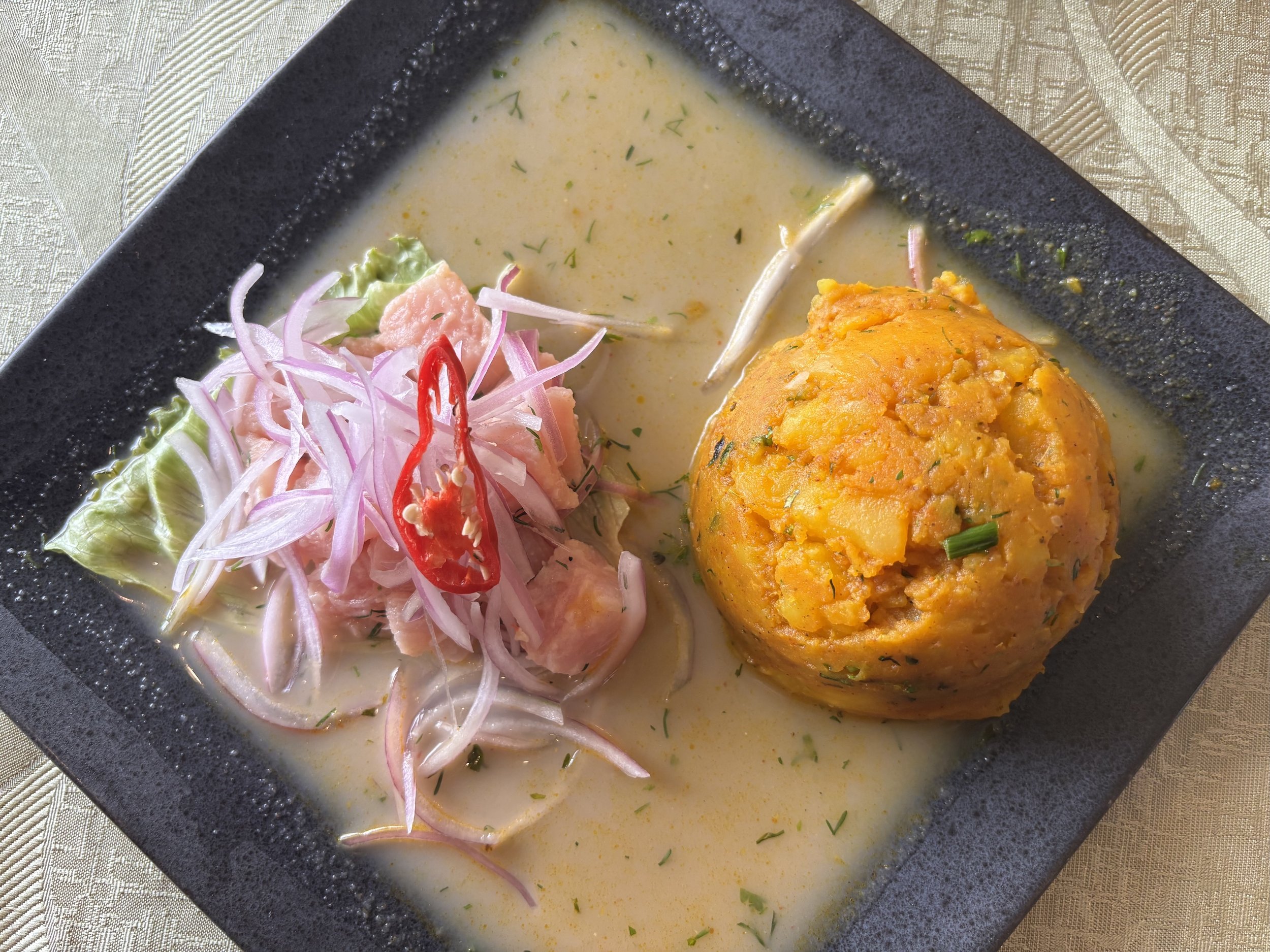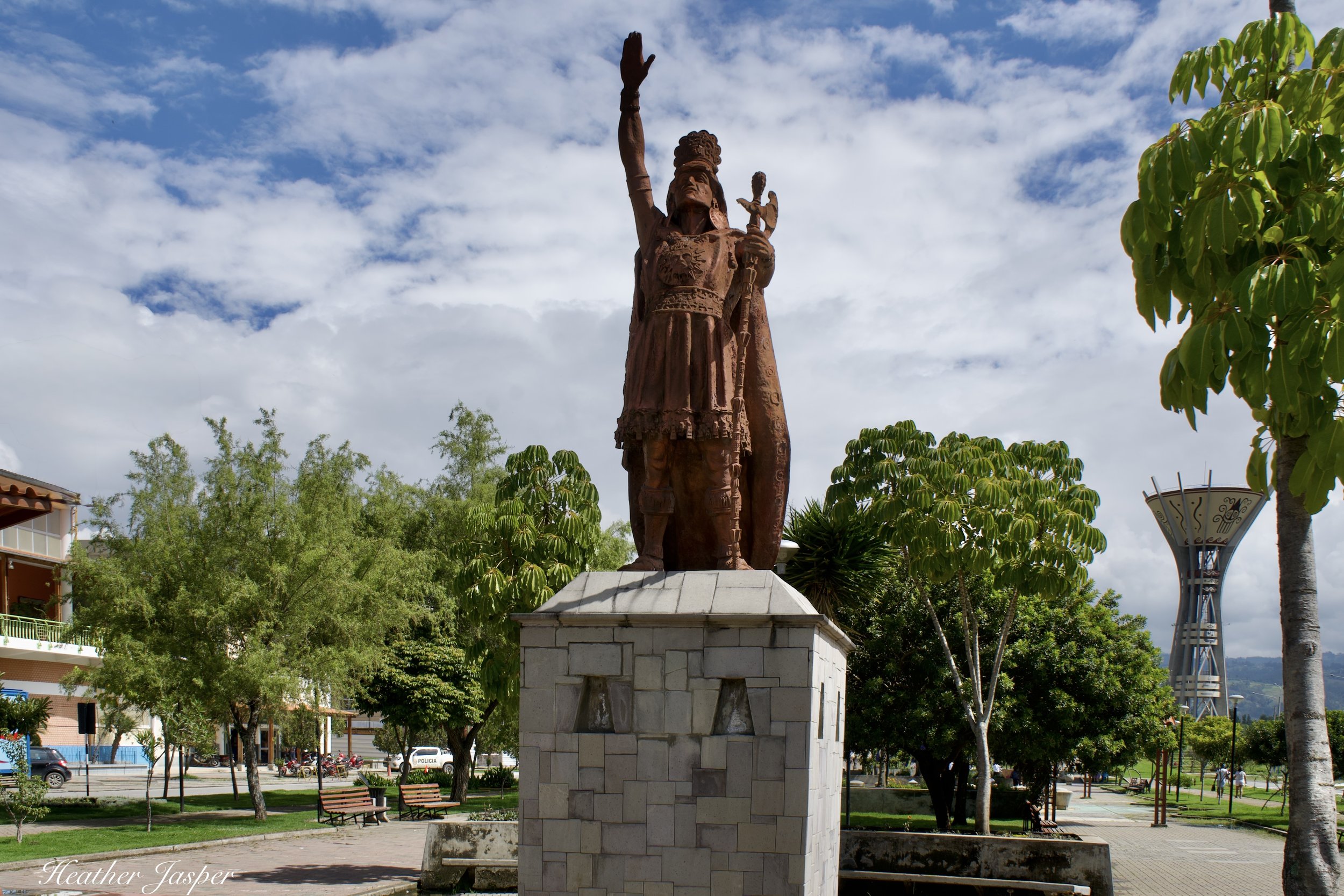Cajamarca Travel Tips
Cajamarca’s Qhapaq Ñan has statues of all 14 Incas and is a great place to start carnival!
Cajamarca is in northern Peru, in a mountain valley close to the rainforest, like Cusco.
That’s one of the main reasons the Inca felt so at home in Cajamarca, and why the Inca Atahualpa visited so frequently. (Unfortunately, that’s how the Spanish captured and murdered him there). It’s like Cusco except that Cajamarca has some of the best hot springs in Peru. Atahualpa even had his own small pool built at the springs, which have since been known as Baños del Inca.
Here's everything you need to know about visiting Cajamarca!
My favorite places around Cajamarca were Ventanillas de Otuzco, Cumbe Mayo, and of course, Baños del Inca.
Ventanillas de Otuzco
These gaping rows of 337 ventanillas (little windows in Spanish) were never actually windows. They were burial chambers for the pre-Inca Caxamarca people. Ancestors were placed in the fetal position and sealed in with objects they would need in the afterlife.
The Caxamarca lived in what today is called Cajamarca from about 50BCE to the 1530s, when the Spanish invaded. The Inca conquered them in the 1450s, but under Incan rule the Caxamarca retained their language, culture, ceremonies, cuisine, fashion, art, and architecture. After the Spanish invaded, their culture was mostly destroyed, and these burial chambers were looted for gold and silver.
How to visit Ventanillas de Otuzco?
Otuzco is just 20 minutes from the center of Cajamarca, and you can take a taxi or a city bus. Several bus lines go out to the village of Otuzco and the fare is s/2. Taxis cost approximately s/15, depending on where you depart from. The entrance fee is only s/5 per person.
The Cumbe Mayo tour starts by some cool rock formations, then goes along the Cumbe Mayo canal.
Cumbe Mayo
Cumbe Mayo means narrow river in Quechua, and it’s a 9km (5.6mi) canal built by the Caxamarca people long before the Inca conquered them. The canal was purely ceremonial and artistic. It didn’t have any agricultural value and didn’t bring drinking water to any village.
The Cumbe Mayo engineering is impressive. The canal varies between 30-45cm wide (12-18in) and is 45-60cm deep (18-24in). They even have the speed of the flow of water carefully controlled: the gradient drops evenly and in spots that they needed the water to flow faster they put in curves and in spots they wanted it to go slower they put in zig-zags of 90º angles.
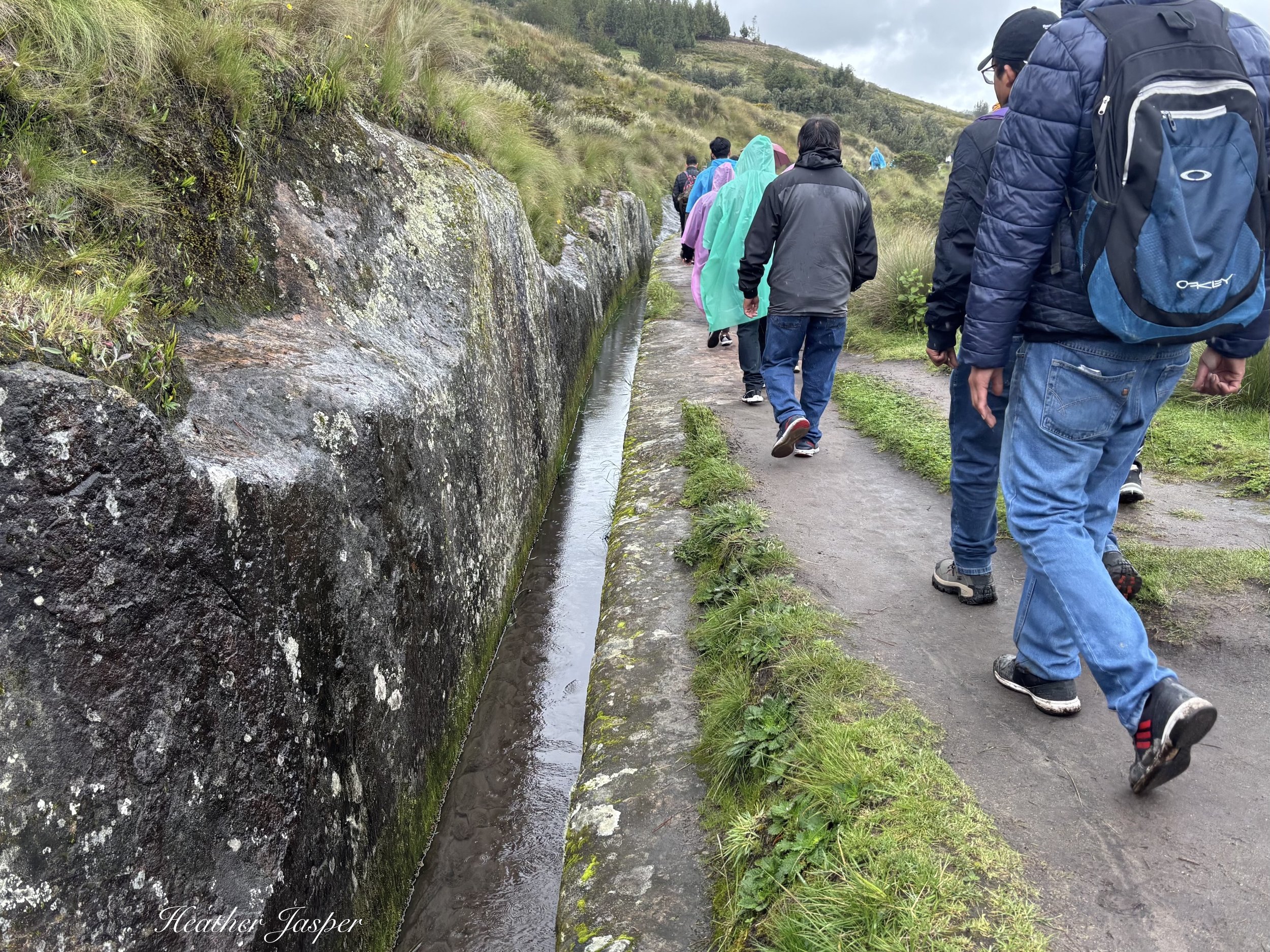


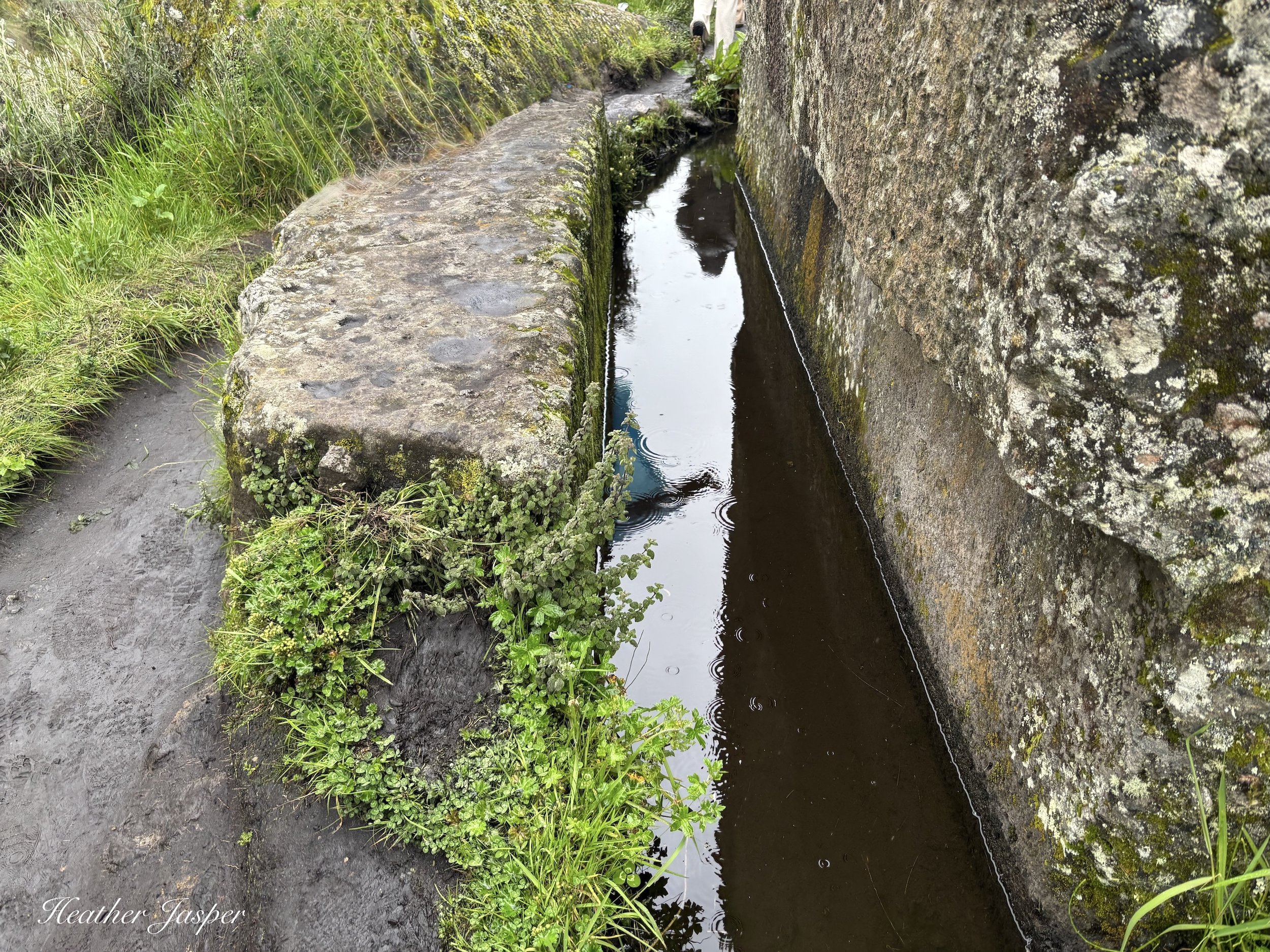

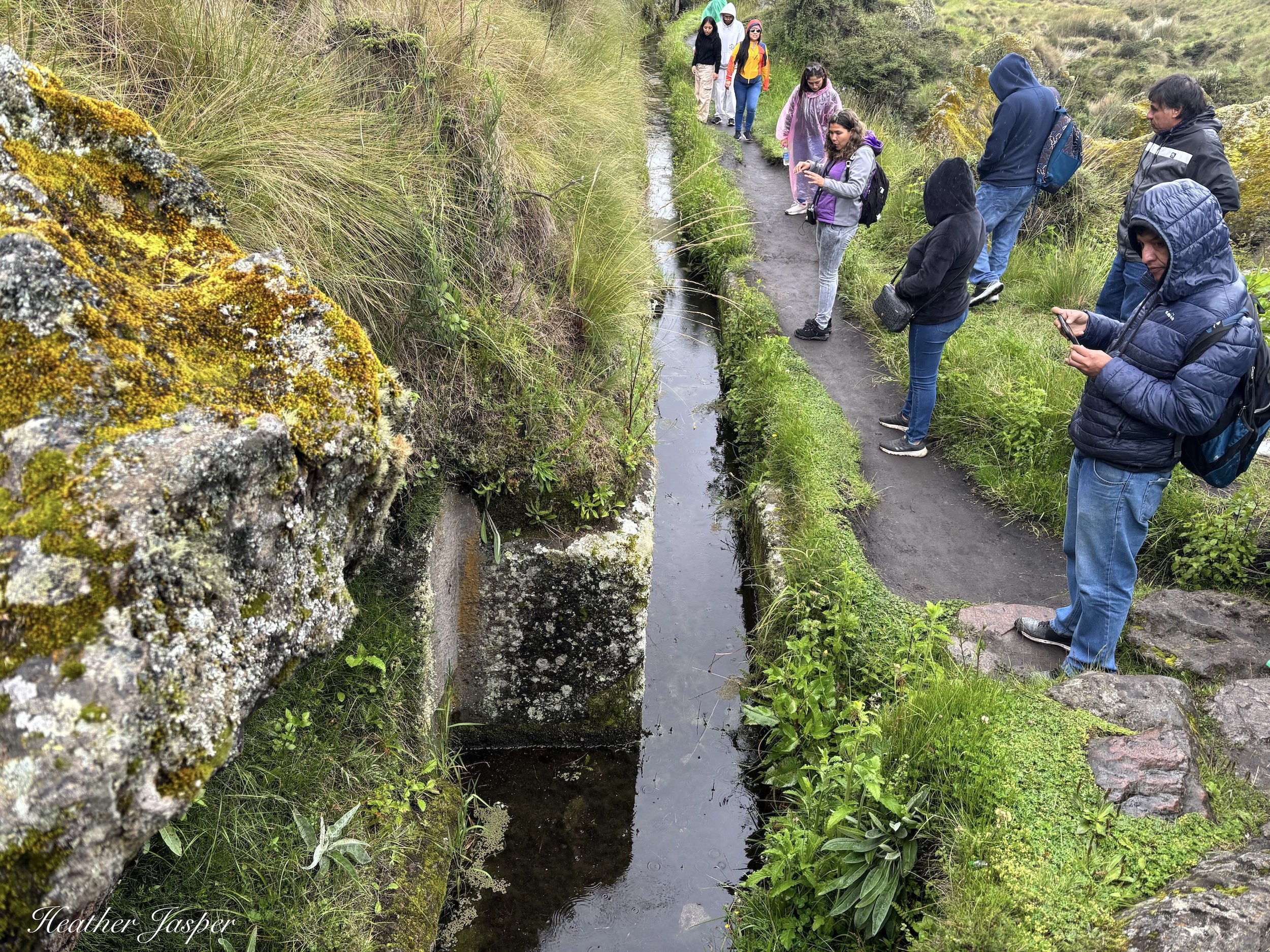
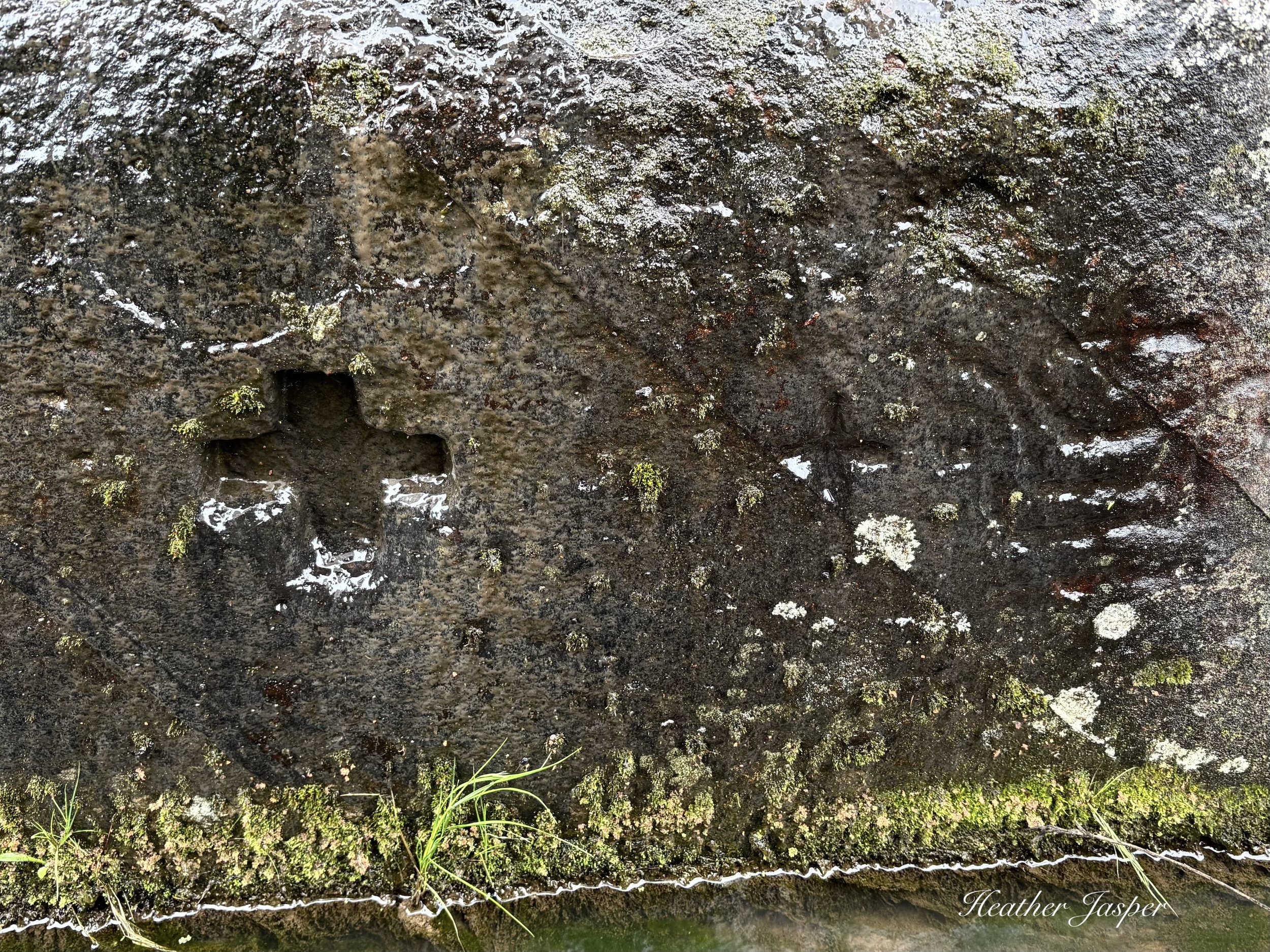
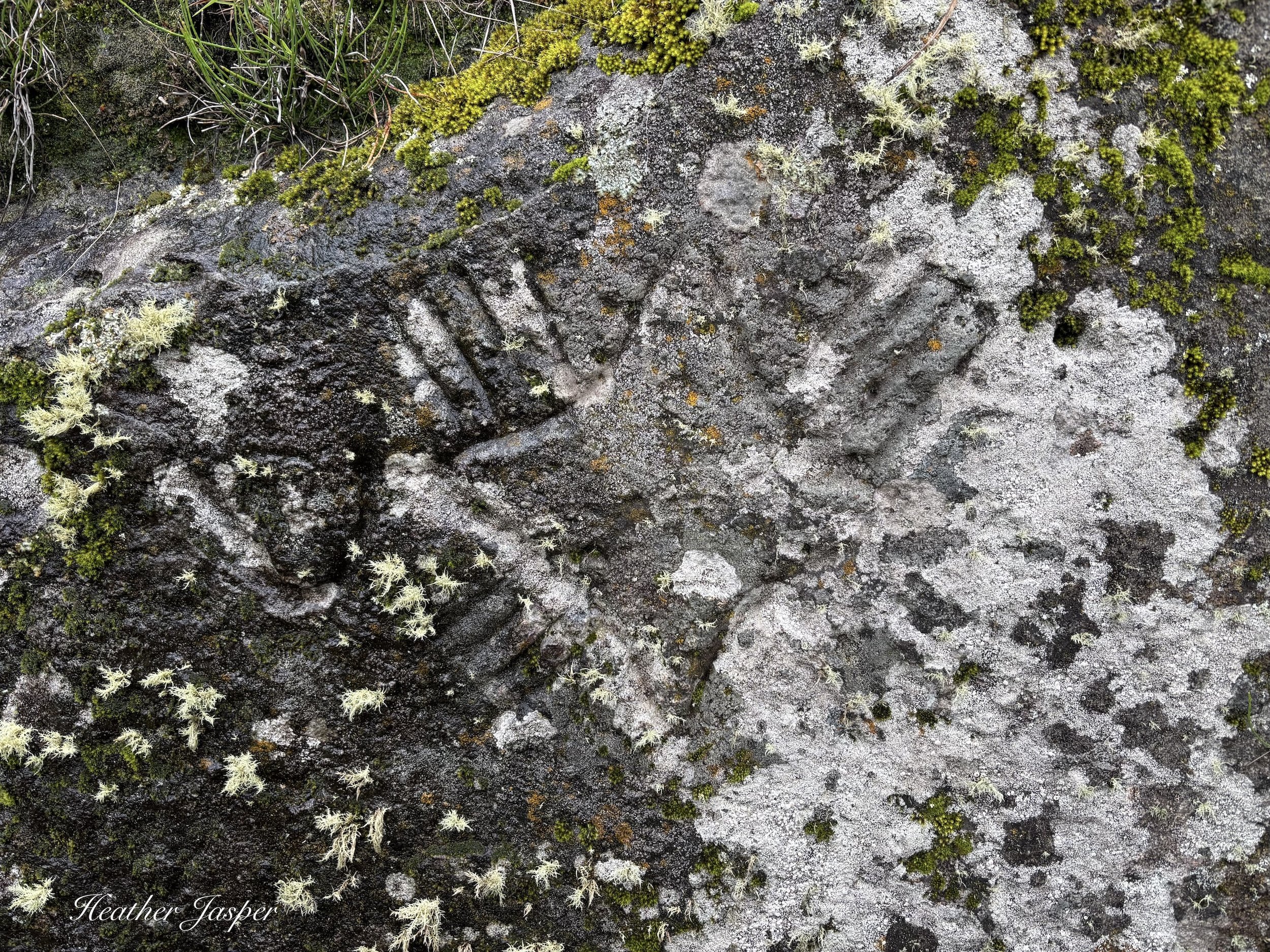
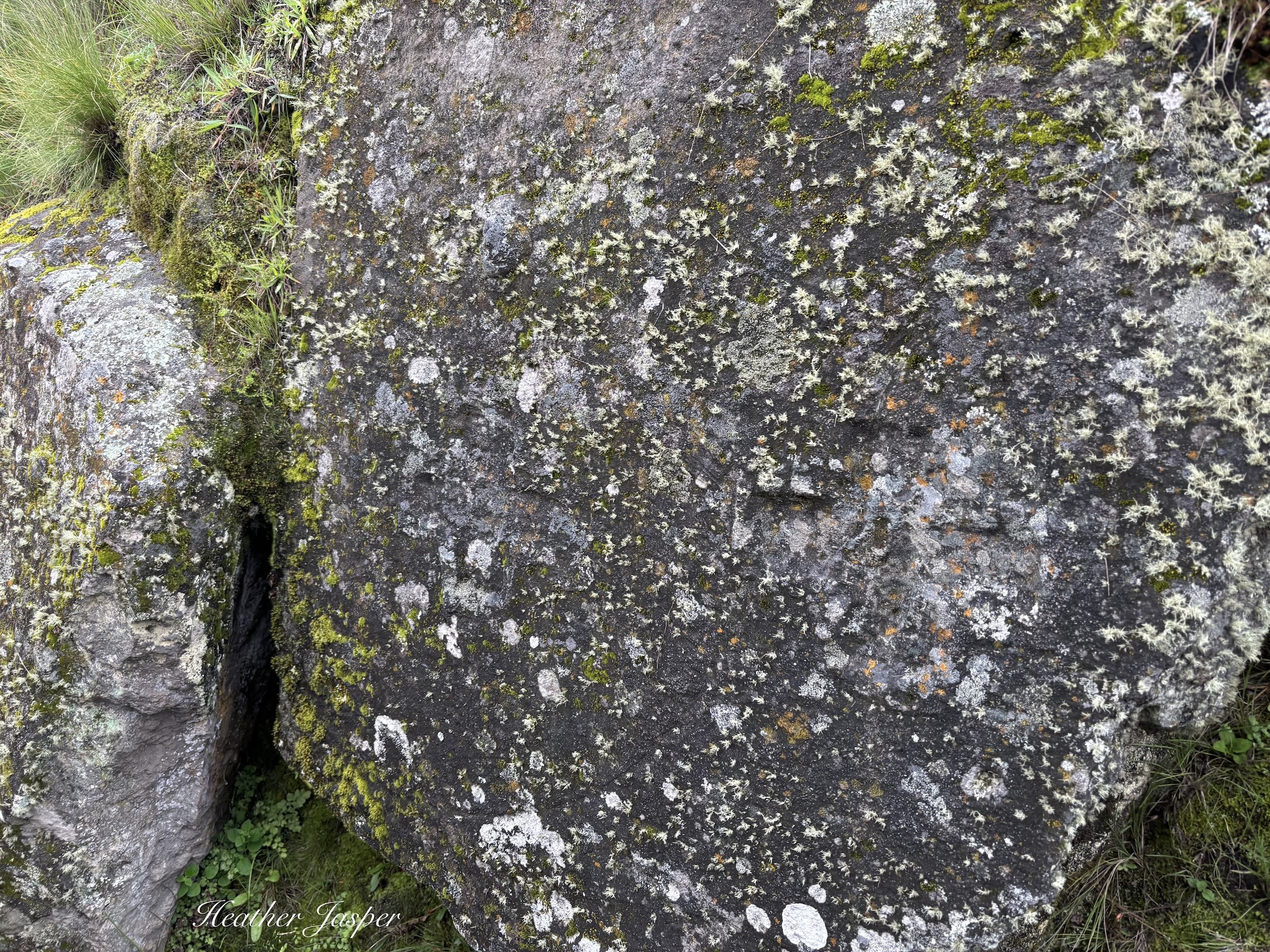
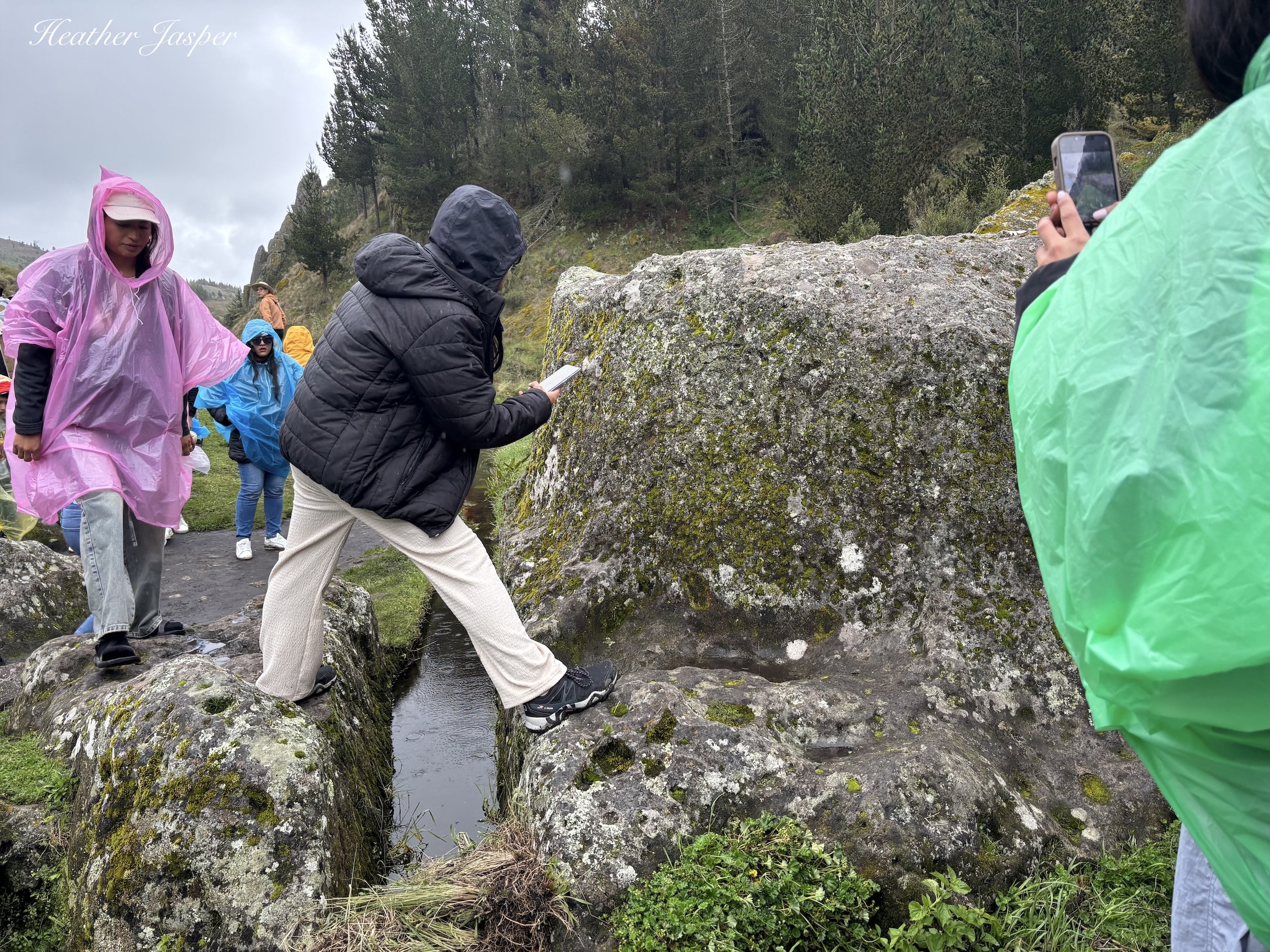
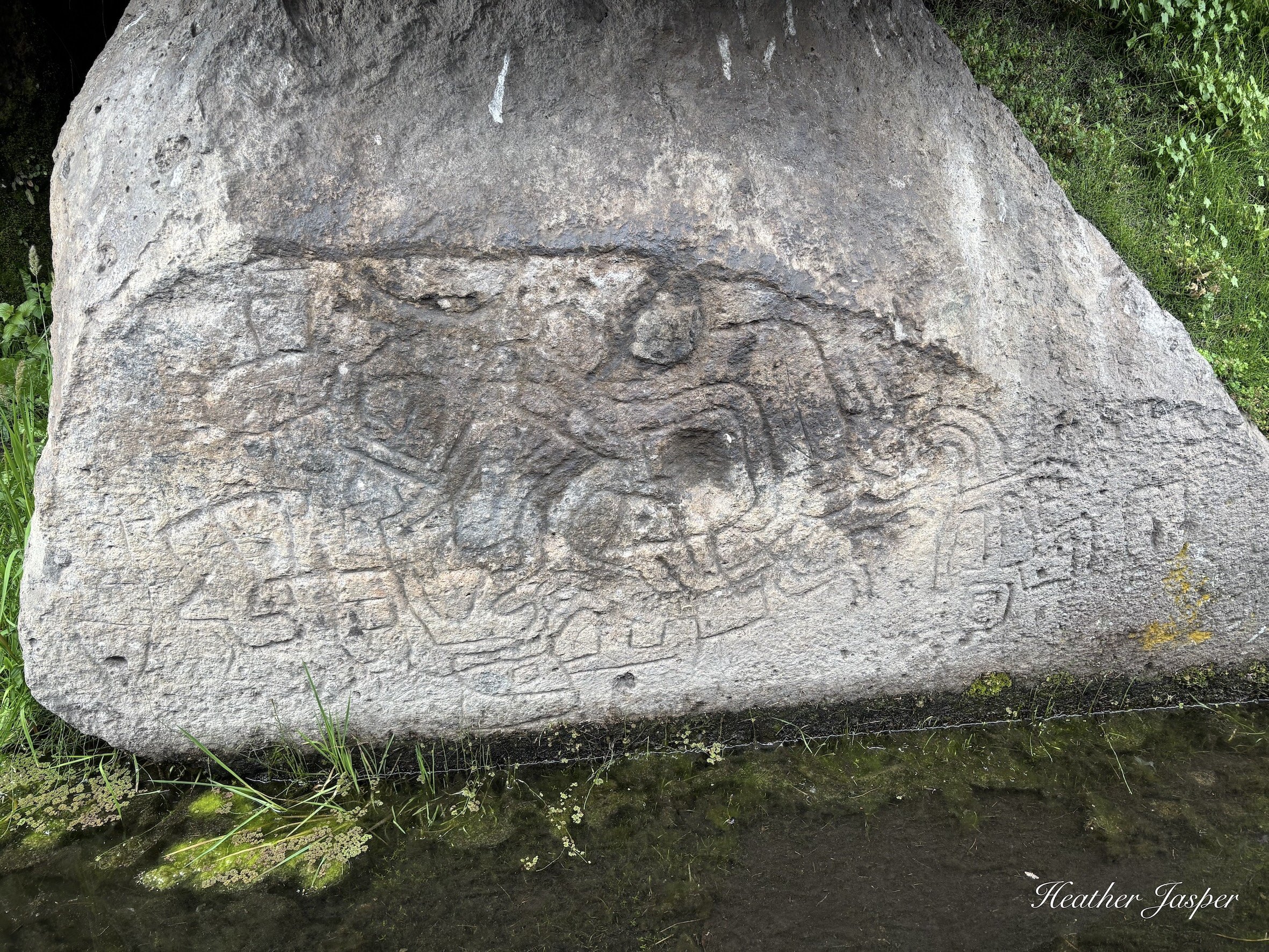
Along the canal are petroglyphs, some obviously zoomorphic like jaguars and others symbolic like four-pointed stars and crosses. They’re hard to pick out in my photos because it was a cloudy day and the light was flat.
The Cumbe Mayo tour starts at a plug of volcanic rock with a small cave full of petroglyphs and a natural tunnel through the middle of the rock that’s become a popular tourist destination. On the other side is a family who sells food and has a horse for people to take photos with. It’s clearly popular with tourists from Lima but I only saw two other international tourists while I was there.
Cumbe Mayo was my favorite tour from Cajamarca. It’s a 4-hour tour that took from about 10:30 to 2:30pm. I appreciate that Cajamarca tours don’t leave crazy early like most Cusco tours!
How to visit Cumbe Mayo?
Dozens of our agencies around Cajamarca’s main square (Plaza de Armas) sell tours to Cumbe Mayo. I recommend a tour because the road isn’t paved and it’s not easy to get a taxi. The tour cost me s/25, which was worth it for the transportation and the guide. Groups are usually about 20 people, but I don’t think a private tour would be very different because so many groups bunch up and blend together. The drive is about half an hour and the entrance ticket is s/8.
A statue of the Inca Atahualpa stands over the pools at Baños del Inca.
Baños del Inca
Baños, as the locals call it, is Cajamarca’s hot spring suburb. This is a place you can spend the whole day, between the swimming pools, small private pools, massages, restaurants and places to picnic or just take photos. Like most places in Cajamarca, there is a throne and costumes so you can dress up as the Inca or the Qoya, the Inca’s wife.
The springs have been developed into pools with surrounding buildings for at least 2,000 years. Unfortunately, their popularity has destroyed most of the archeological value, since the Inca built on top of the Caxamarca constructions, the Spanish built on top of the Inca and modern buildings are on top of those. One of the few historic structures left is a building around the Pozo del Inca, the Inca Atahualpa’s private pool.
Pozo del Inca
The history of Baños del Inca goes back thousands of years and includes Spanish chronicles of the Inca Atahualpa’s private pools.
Baños del Inca Entrance
There is a long menu of options at Baños del Inca but if you’re not a hot spring fan you can still enjoy the archeological site, museum & restaurant.
I rented a pozo, though I wasn’t entirely sure what it was. There is a long menu of options at the entrance, and I just asked the attendant what would be the least crowded. Turns out a pozo is a small room with a high ceiling and skylight above a private pool. Attendants drain and scrub the pool after every guest, so you can fill the pool to your preferred temperature.
I was told that I only got half an hour, but it was a very generous half hour. I refilled the pool, soaked for about 20 minutes until I couldn’t handle the heat anymore, drained the pool, washed my hair in slightly cooler water, rinsed off, refilled just a few inches with really hot water to stand in while I dried off and combed out my hair. Then I got dressed, ate a snack, drank a whole bottle of water, and then the attendants knocked on the door to tell me my time was up. It was almost an hour.
How to visit Baños del Inca?
There are several bus lines in Cajamarca that go out to Baños and cost s/2. A taxi is about s/10, depending on where in Cajamarca you are. Take a swimming suit, towel, water, and snacks.
Ceviche con frito is the most traditional dish that you have to try in Cajamarca.
Cajamarca Travel Tips
Here’s when to go, what to eat, where to stay and my other top tips for visiting Cajamarca.
If you can, go for carnival – check out my blog about carnival in Cajamarca. Carnival is invariably in the rainy season, so if you want to do much hiking or venture far from town, go in the dry season April – October. Roads are often washed out in the rainy season, which is why I stayed close to town.
Try ceviche con frito, Cajamarca’s plato típico, which you’ll see at every restaurant and at every market. Also try caldo verde, egg drop soup with potatoes and cheese like paneer, with herbs that make it bright green. The best Italian food in town is at Madre Artesana Trattoria two blocks from the main square and the best restaurant in general is Paprika at the Costal del Sol.
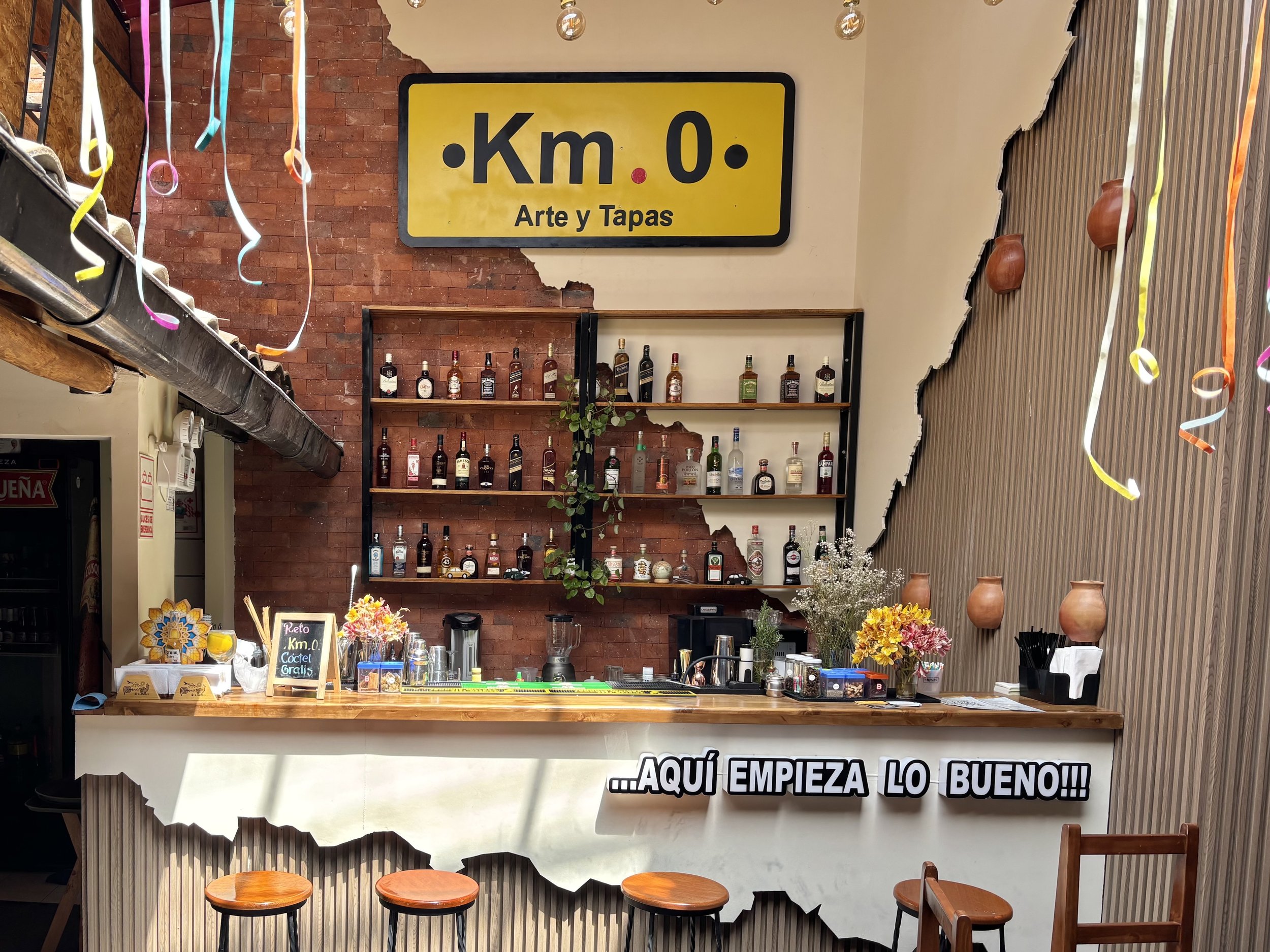

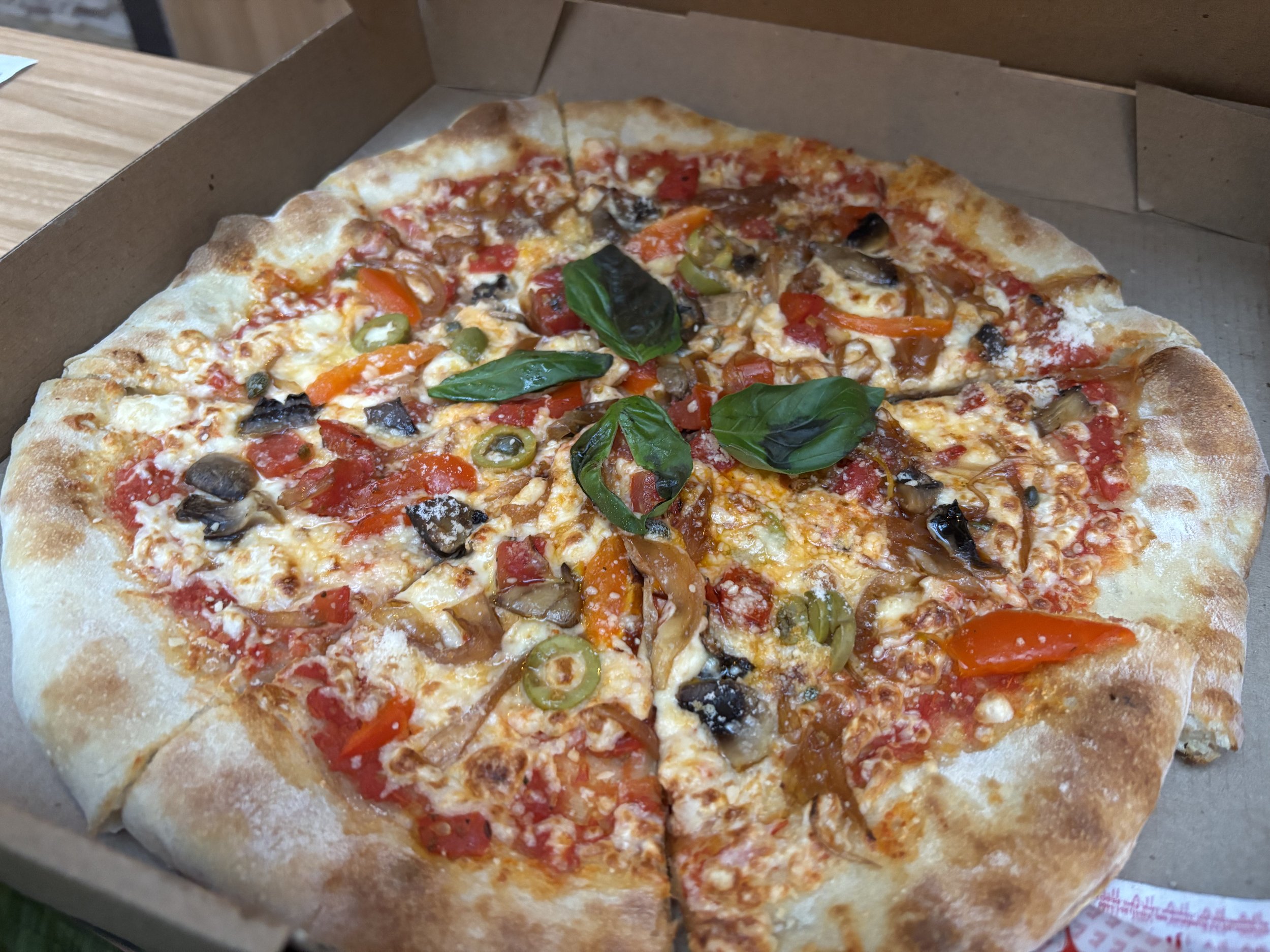
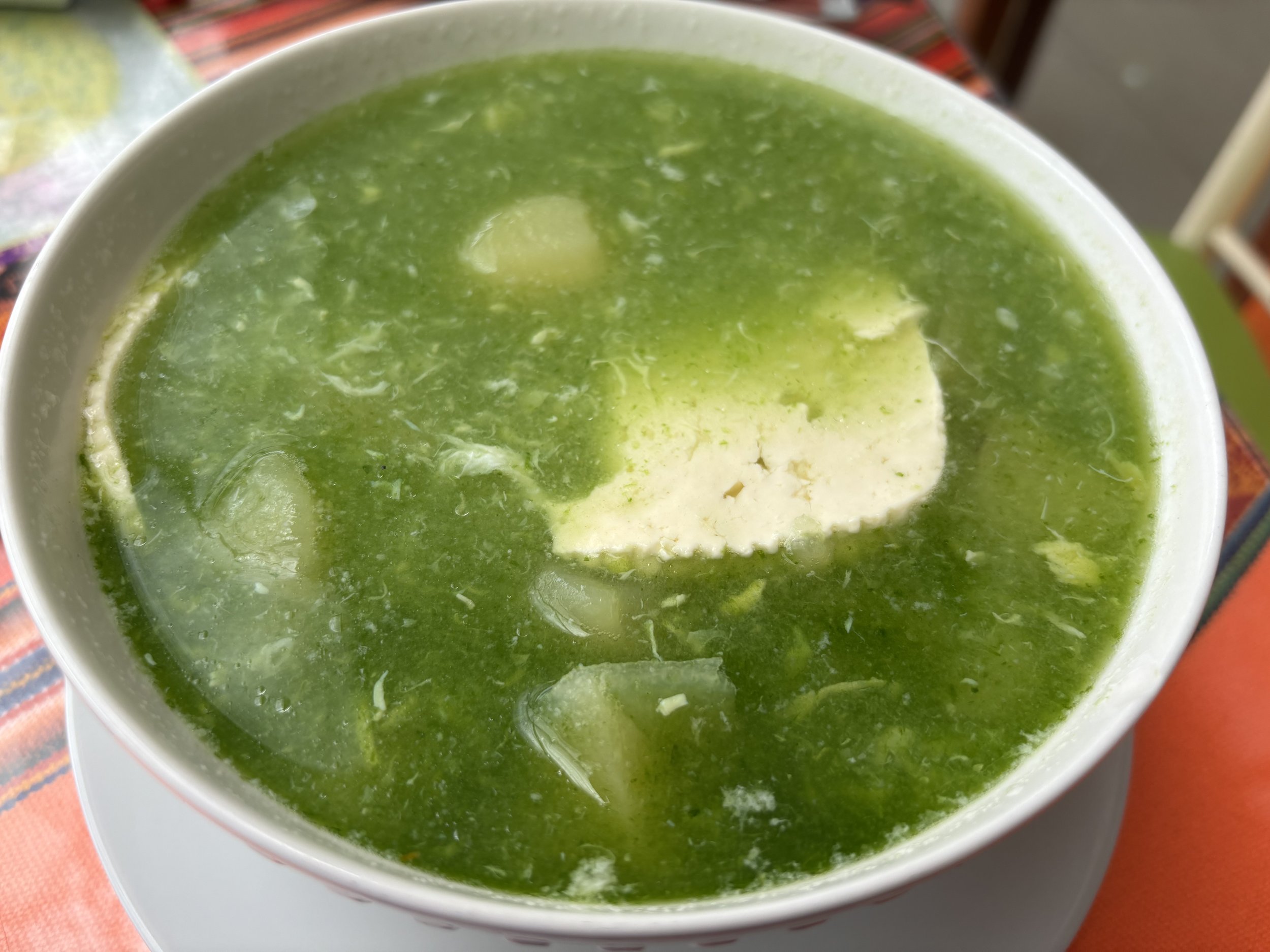
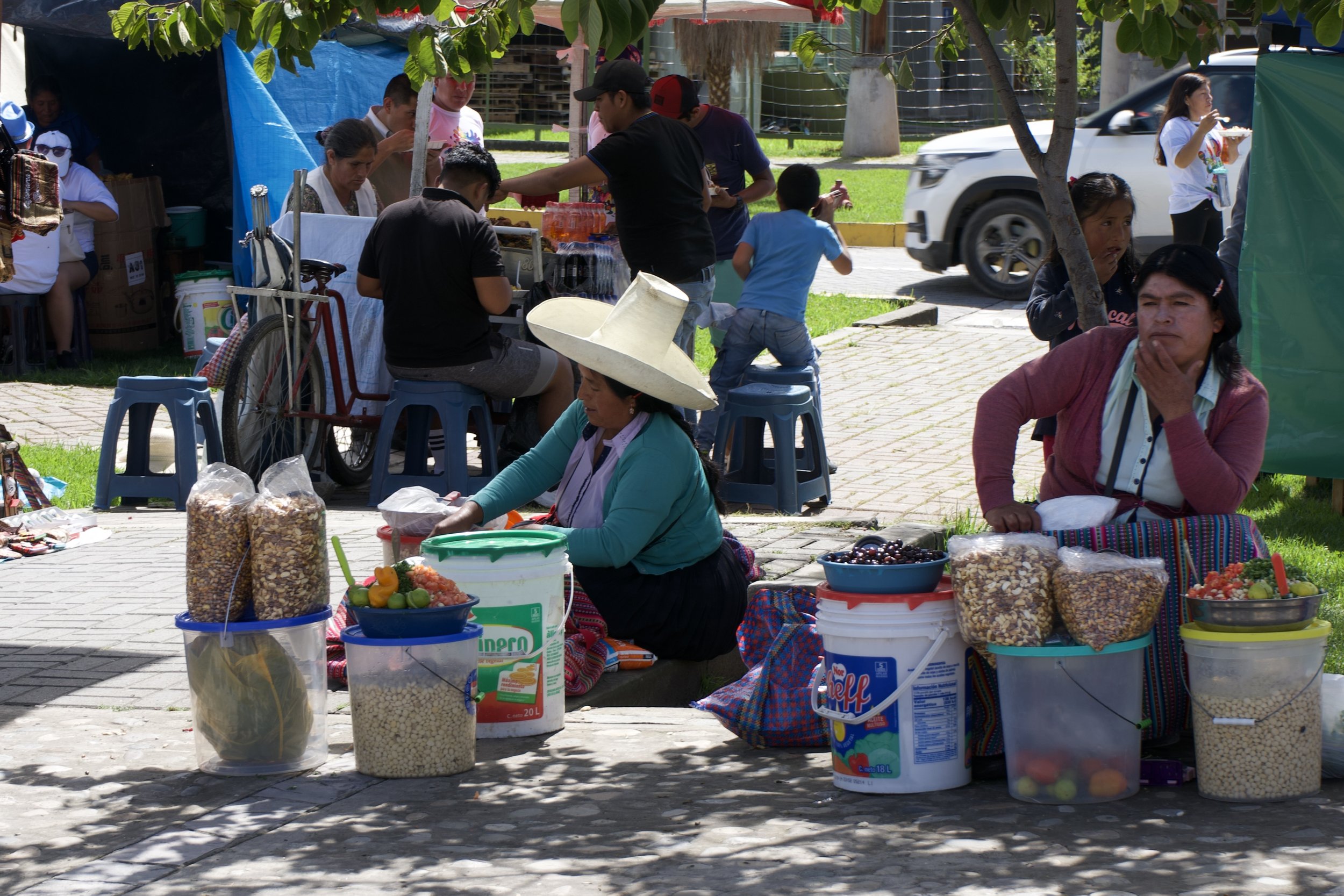
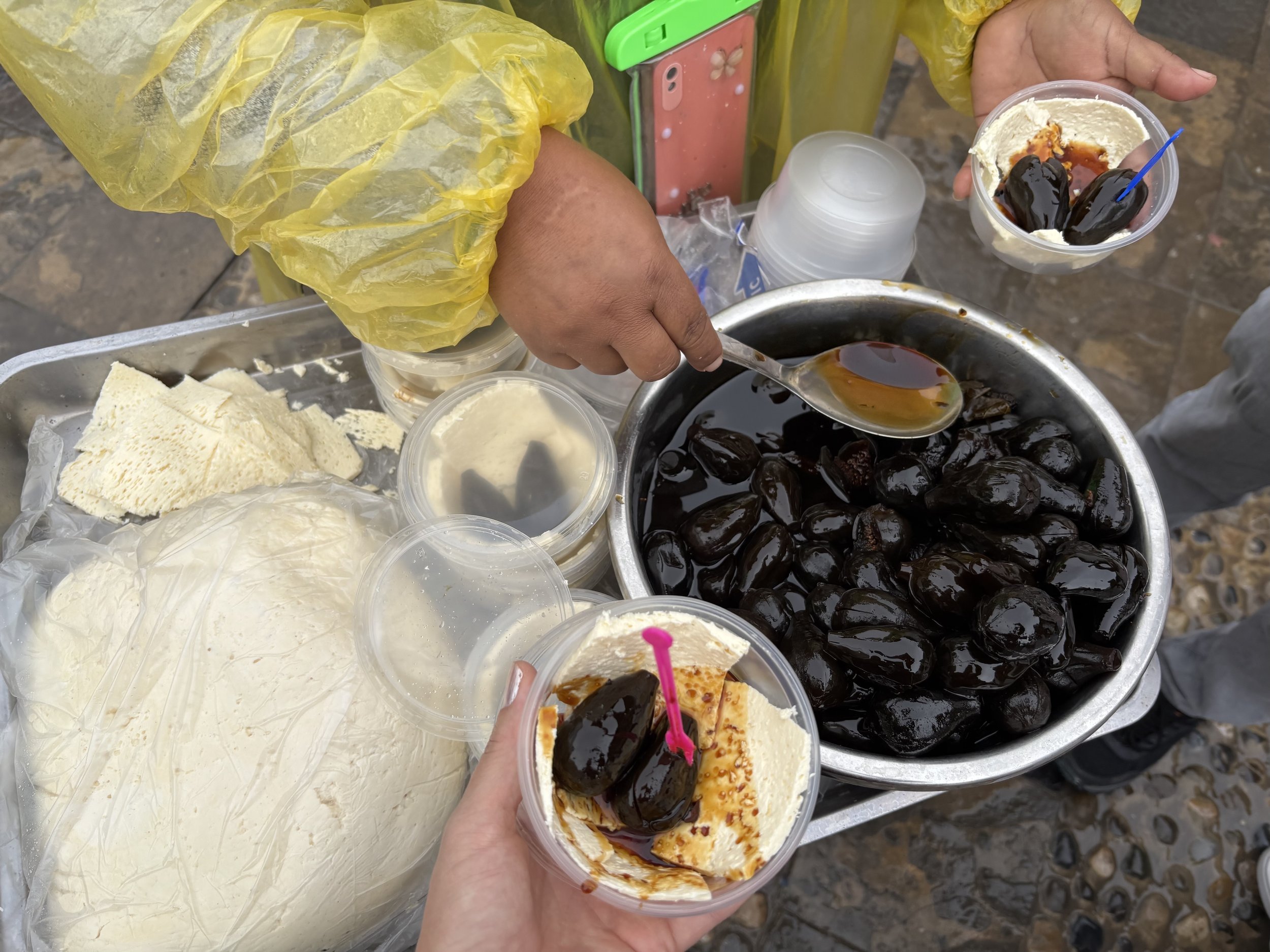
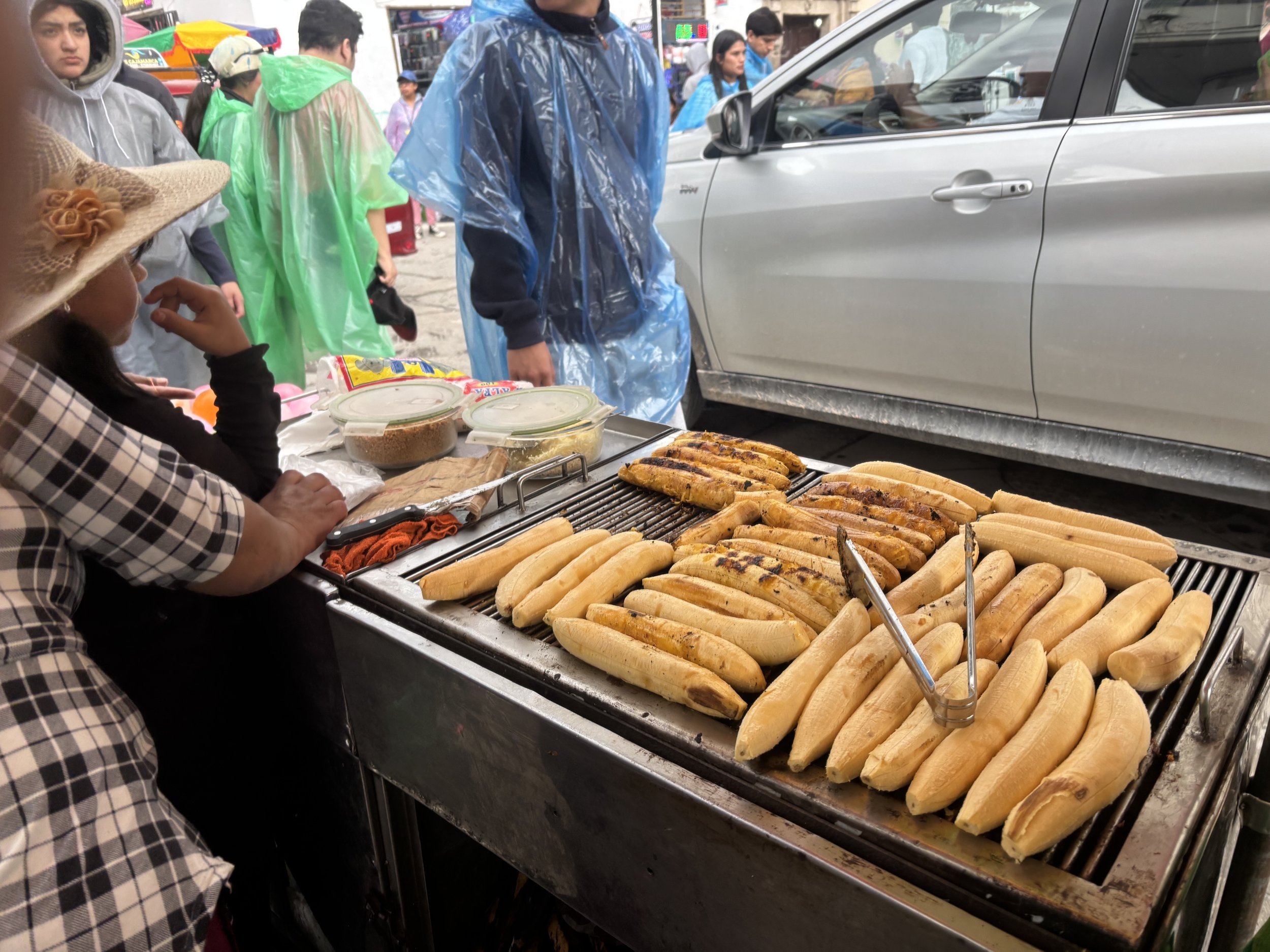
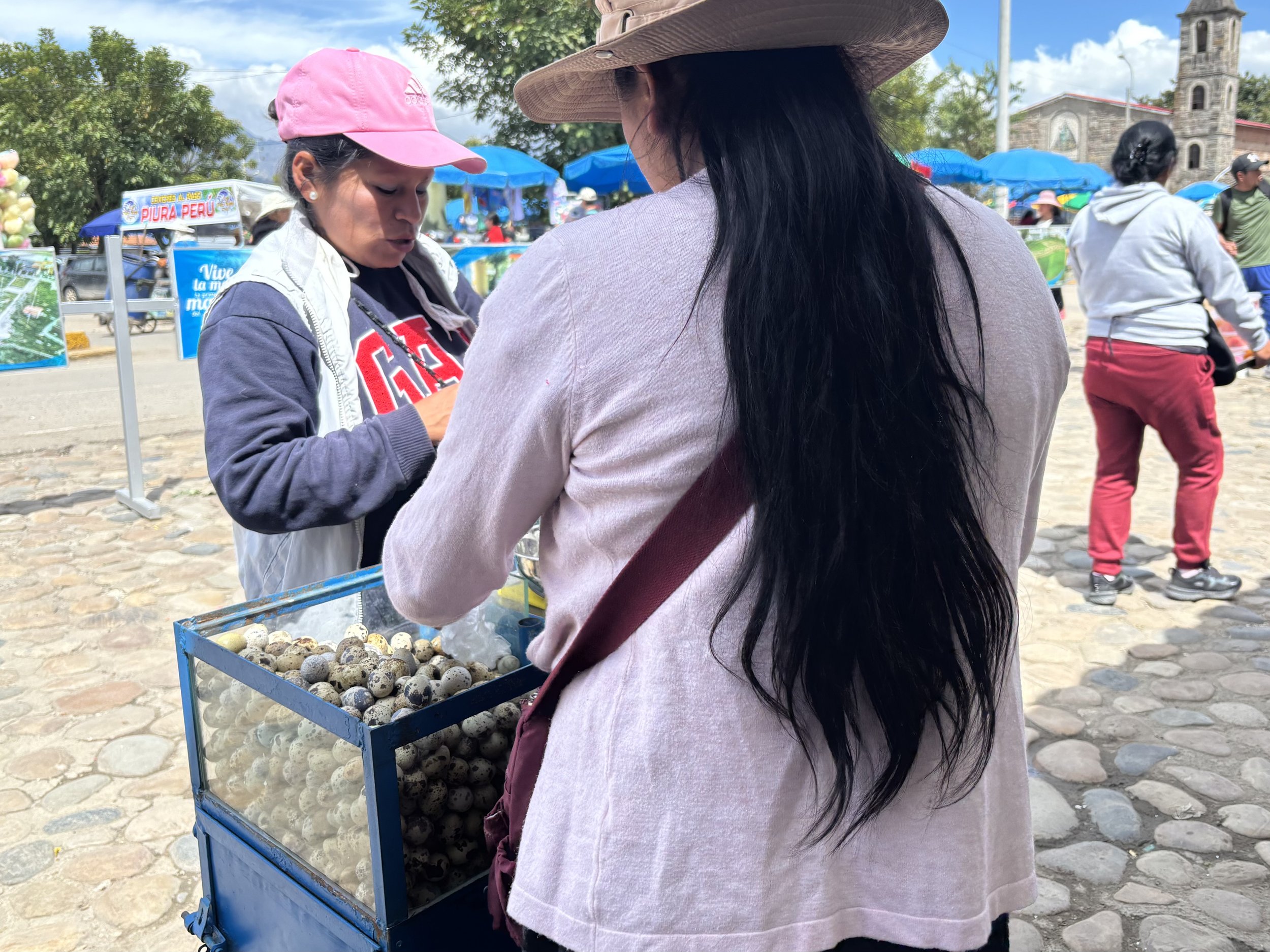
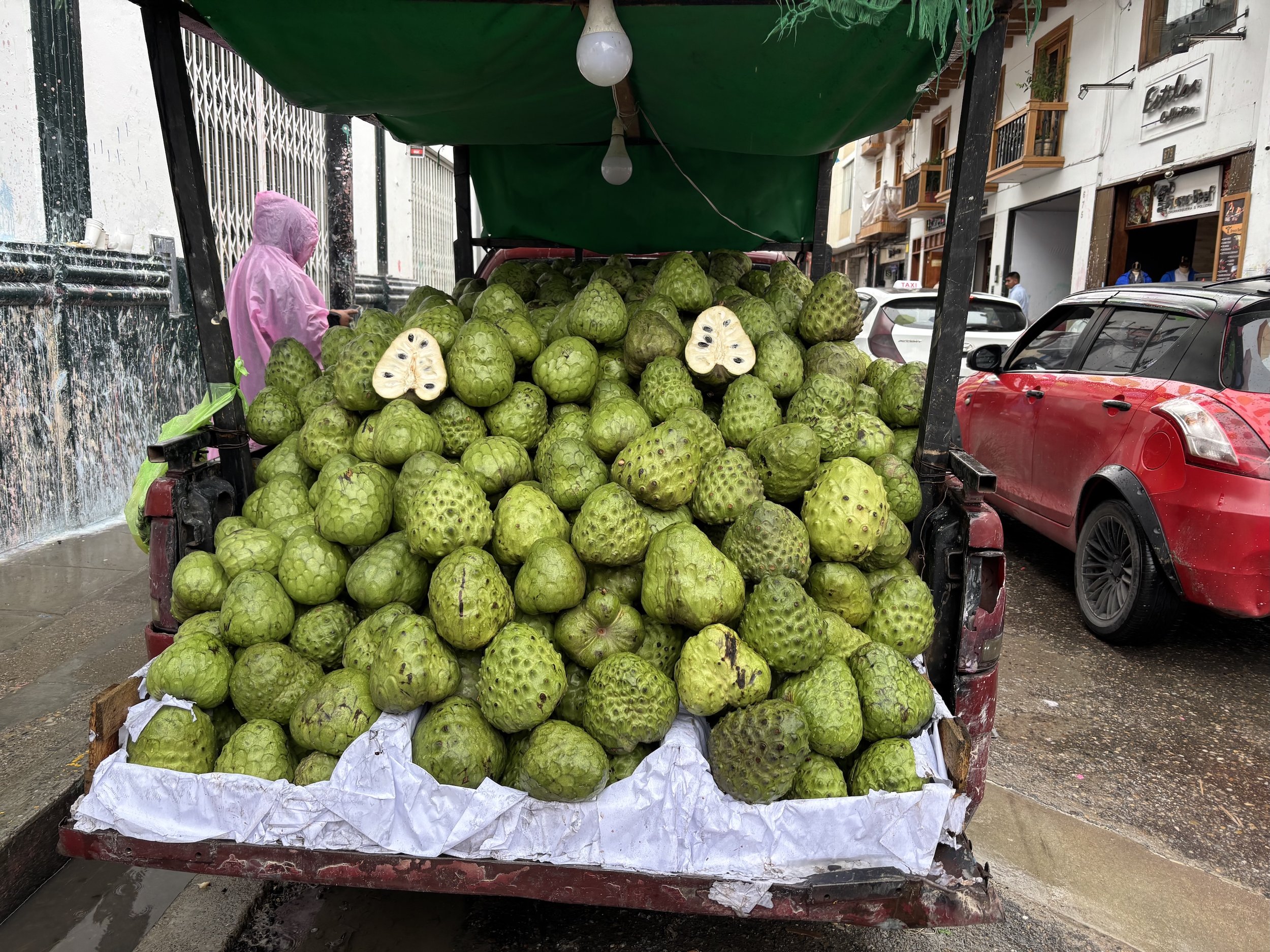
Cajamarca is known for rosquitas, flakey little round cookies that are fantastic with either coffee or hot chocolate. Since the city is close to the jungle, there is a lot of great coffee and chocolate.
There are dozens of cheese shops around town, which also sell fresh yoghurt and milk. Cajamarca is surrounded by dairy farms, so besides cheese and yoghurt you’ll also see lots of ice cream shops. Try the blueberry ice cream and yoghurt because there are also blueberry farms in the area and it’s all fresh and delicious.
Cajamarca has several great hotels, and the best is Costa del Sol on the main square. There are also lots of small, family-run hotels and hostels.
If you’re coming from sea level, take it easy the first day because Cajamarca is at 2,750 m (9,022ft) above sea level. If you’re coming from Cusco or Huaraz, you won’t notice the altitude.
Bring cash Peruvian soles or withdraw money from ATMs because the exchange rates I saw weren’t as good as the rates in Lima and Cusco. There are plenty of bank ATMs and one Banco de la Nación ATM that I found. I always use Banco de la Nación because it doesn’t charge fees.
Everywhere you go in Cajamarca, you’ll find statues and history of the Inca Atahualpa, assassinated in 1533.




















